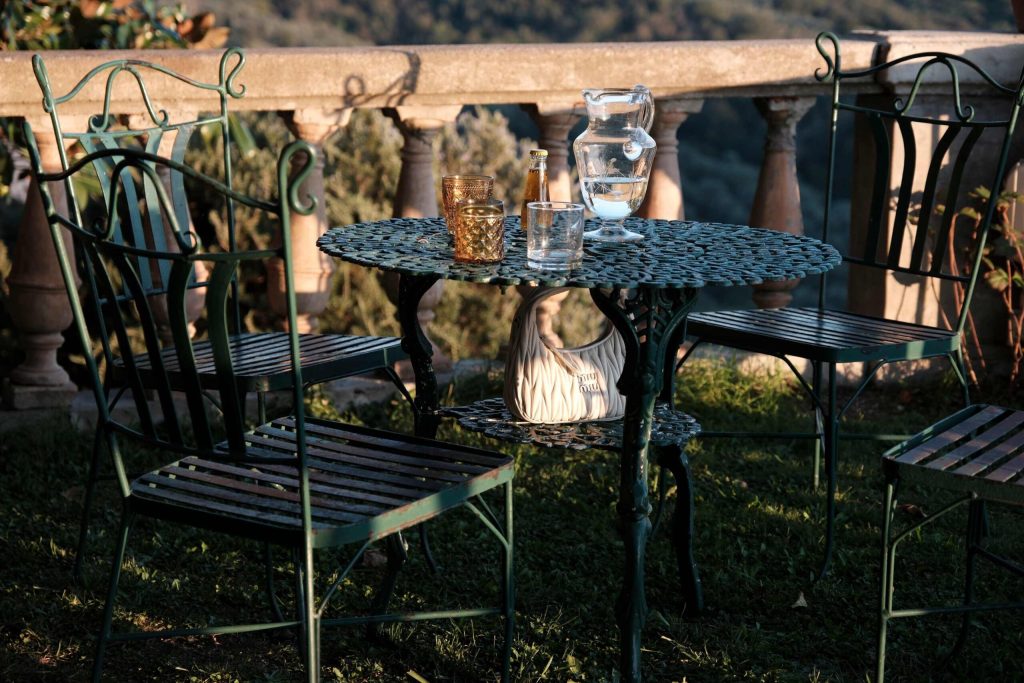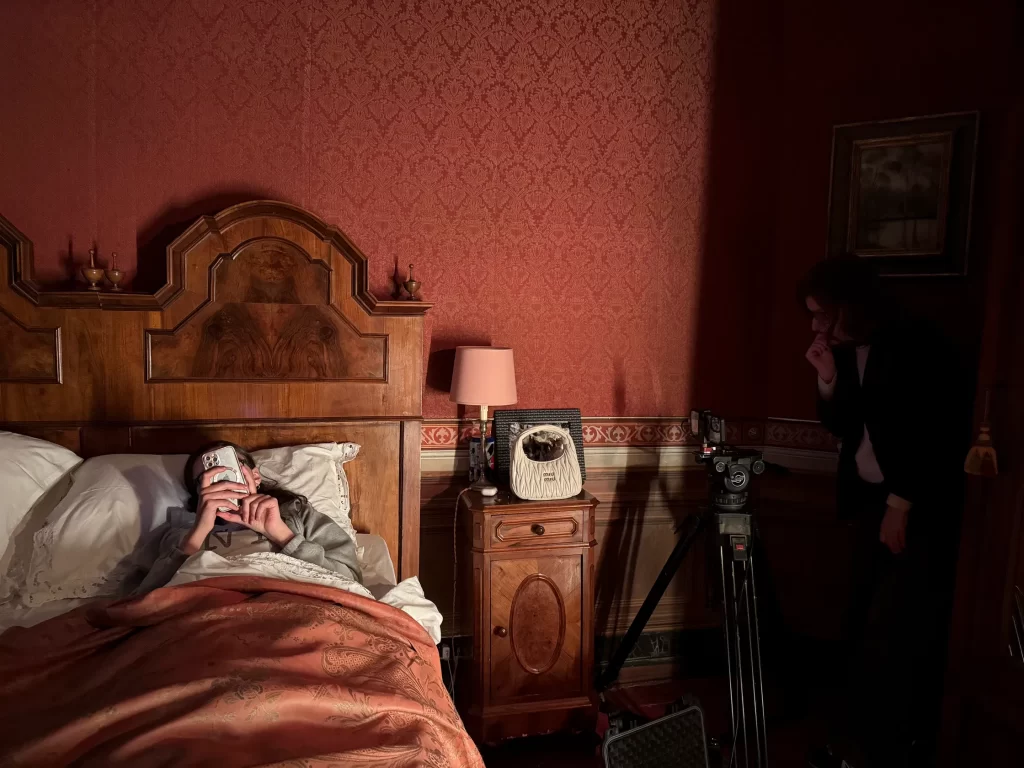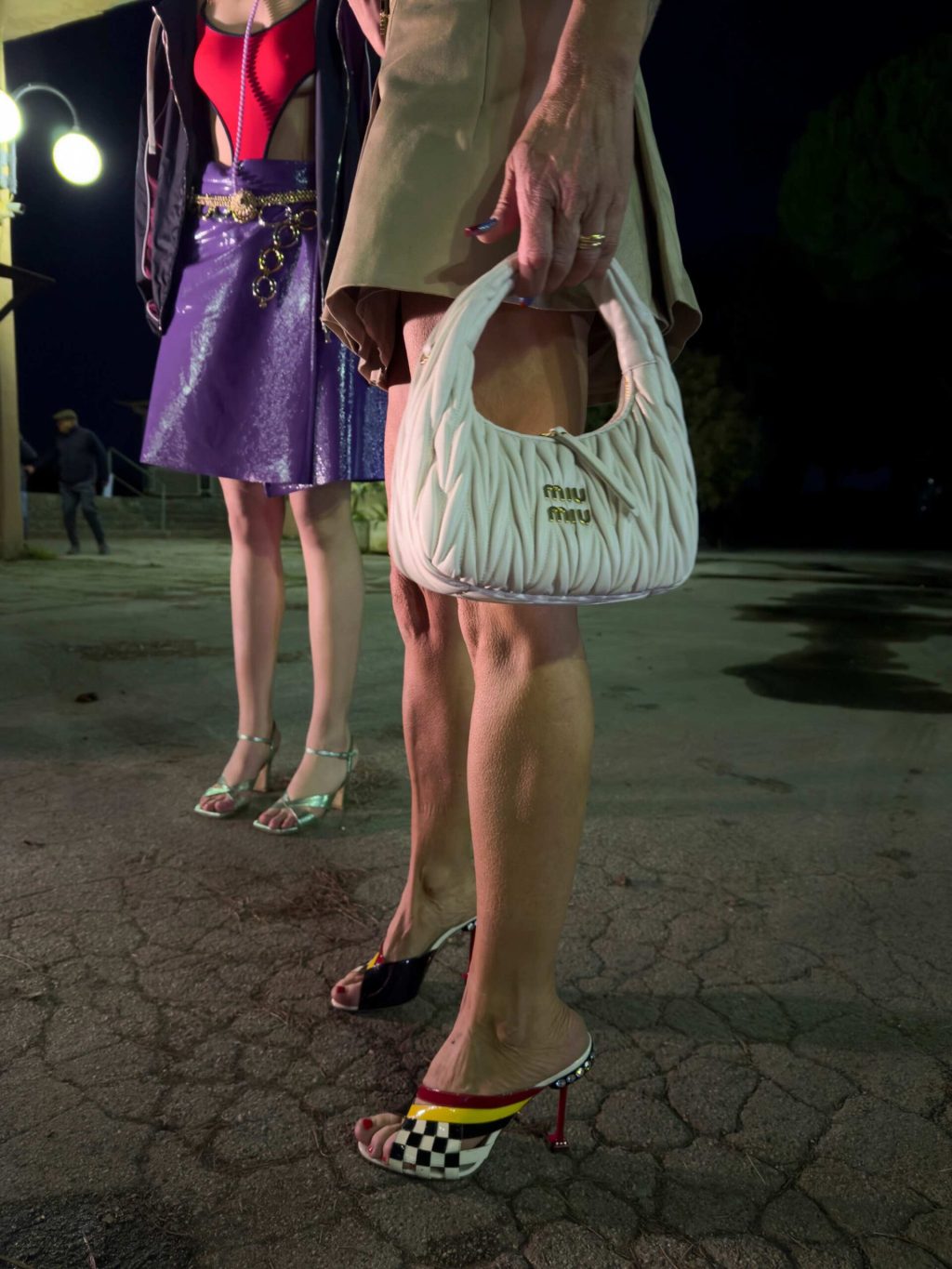Autobiografia di una borsetta: A Bag’s Tale by Joanna Hogg for Miu Miu
What does a handbag do when no one carries it? How does it see the world? When it slips from a woman’s hand, gets abandoned in a corner, passed from lover to lover—does it carry the weight of those memories? Or are all these stories a purely human illusion? Joanna Hogg builds the 29th chapter of Miu Miu Women’s Tales around these very questions, turning a handbag into more than just an object: a silent witness to time itself. This time, the protagonist is a white Miu Miu Wander.
In Hogg’s lens, the bag becomes an eye observing the world in silence. We first meet Wander resting alone on a rock in the vast landscapes of Maremma, Italy. This is where its story begins—in stillness. From there, the film rewinds through the bag’s life: its immaculate birth in the Miu Miu factory, its transformation in the hands of different owners, from the opulence of grand Italian villas to the shadows of urban peripheries. With every new touch, every new hand, the bag absorbs another story; the bag evolves—from a status symbol to a relic of heartbreak, from a witness to love to a symbol of being lost.

In Hogg’s cinema, an object is never just an object. Her films uncover the spirit of things, the memories soaked into them, and the complex bond between people and their possessions. Just as The Souvenir explored the collapse of a relationship through the silence of interiors, Autobiografia di una borsetta reads the surface of a bag like a diary—etched with love, loss, and transformation. The bag is not an accessory; it is a carrier of time itself.
Since 2011, Miu Miu Women’s Tales has invited female directors to explore femininity through their own vision. Each season, a new short film, signed by a woman, becomes part of this ever-growing conversation. As Miuccia Prada puts it, “a conversation with women about women.” From Ava DuVernay and Miranda July to Chloë Sevigny and Agnès Varda, the series has evolved beyond fashion film clichés to become a space for examining power, vulnerability, desire, and self-discovery.
With Autobiografia di una borsetta, Hogg rewrites the usual narrative structure. The central character is not human but an object. People are reduced to supporting roles—just hands passing the bag along, blurred faces in the background. The bag is the one carrying the story. And this story is not only the journey of an object but a metaphor for the fragility, desire, alienation, and fleeting nature of women’s lives.

To enhance this radical shift in perspective, Hogg chose to shoot the film entirely with four iPhone 16s. This choice allows the camera to remain physically close to the bag, capturing the world from its point of view. Sometimes, we see through the eyes of an insect, sometimes as if we are the wind brushing against it. Ultra-wide lenses emphasize the bag’s position in time and space. In Hogg’s visual language, realism and magical realism merge, transforming what could have been a simple fashion film into a cinematic memory archive.
Autobiografia di una borsetta is not just the story of a handbag, but a portrait of contemporary Italy. The widening gap between social classes, the fragility hidden beneath glamour, the fleeting triumph of being a desirable object, followed by the inevitable fall into neglect—Wander bears silent witness to all of it. Once a symbol of status, the bag gradually loses both its value and the dreams it once carried.

This is why Hogg’s film is not a traditional fashion film. It is social history seen through the eyes of an object—a poetic meditation on how objects absorb our desires, fears, and humanity itself.
Autobiografia di una borsetta is the fruit of creative freedom. Seeing the world through a handbag’s eyes, connecting memory and materiality, linking personal and collective history—this is where the creative legacy of Miu Miu Women’s Tales meets Joanna Hogg’s cinematic language.
Miu Miu Women’s Tales has always chased what makes fashion more than clothing: the courage of women to tell their own stories in their own voices. Joanna Hogg’s Autobiografia di una borsetta reminds us—sometimes a bag is not just a bag. Sometimes, it’s a diary quietly remembering who we are.